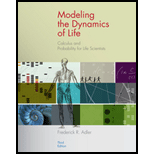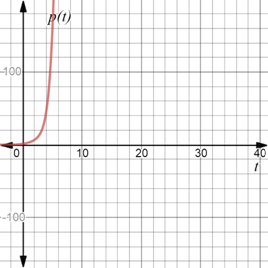
To calculate: The derivative of the function
Answer to Problem 22E
The derivative of the function is
The graph of the function is provided below,

The behavior of the function is interpreted as, the function is an increasing function.
Explanation of Solution
Given information:
The function
Formula used:
The slope of a function at a given point is the derivative of the function at that point.
Product rule of differentiation
Calculation:
Consider the function
Differentiate the function with respect to t ,
Recall product rule of differentiation
Apply it,
Therefore, derivative of the function of the function is
Recall that the slope of a function at a given point is the derivative of the function at that point.
Evaluate the value of the function and slope at the points
At the point
Substitute
Substitute
At the point
Substitute
Substitute
At the point
Substitute
Substitute
The graph of the function is provided below,

The behavior of the function is interpreted as, the functionis an increasing function.
Thus, derivative of the function is
Want to see more full solutions like this?
Chapter 2 Solutions
Modeling the Dynamics of Life: Calculus and Probability for Life Scientists
 Advanced Engineering MathematicsAdvanced MathISBN:9780470458365Author:Erwin KreyszigPublisher:Wiley, John & Sons, Incorporated
Advanced Engineering MathematicsAdvanced MathISBN:9780470458365Author:Erwin KreyszigPublisher:Wiley, John & Sons, Incorporated Numerical Methods for EngineersAdvanced MathISBN:9780073397924Author:Steven C. Chapra Dr., Raymond P. CanalePublisher:McGraw-Hill Education
Numerical Methods for EngineersAdvanced MathISBN:9780073397924Author:Steven C. Chapra Dr., Raymond P. CanalePublisher:McGraw-Hill Education Introductory Mathematics for Engineering Applicat...Advanced MathISBN:9781118141809Author:Nathan KlingbeilPublisher:WILEY
Introductory Mathematics for Engineering Applicat...Advanced MathISBN:9781118141809Author:Nathan KlingbeilPublisher:WILEY Mathematics For Machine TechnologyAdvanced MathISBN:9781337798310Author:Peterson, John.Publisher:Cengage Learning,
Mathematics For Machine TechnologyAdvanced MathISBN:9781337798310Author:Peterson, John.Publisher:Cengage Learning,






